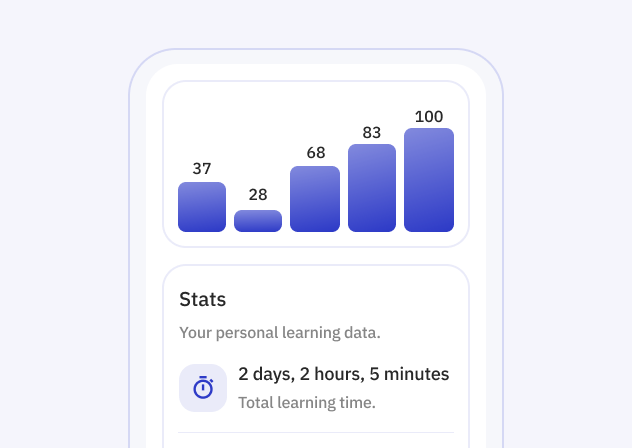Best Language Learning Programs
In today’s fast-paced and interconnected world, the importance of continuous learning cannot be overstated. Whether it’s for personal improvement or professional advancement, learning programs offer structured and efficient pathways to acquiring new skills and knowledge. Among these, language learning programs stand out as particularly valuable, helping individuals bridge cultural gaps and expand their global reach. This page explores the best language learning programs available today, including innovative tools like Talkpal AI, and provides insights into how they can enhance your linguistic abilities.

The most efficient way to learn a language
Try Talkpal for freeIntroduction to Learning Programs
1. Comprehensive Learning with Talkpal AI
Talkpal AI revolutionizes language learning by combining artificial intelligence with user-friendly interactions. This program adapts to individual learning speeds, ensuring that each user can progress at their own pace. Features include voice recognition to improve pronunciation, contextual lessons that simulate real-life conversations, and interactive games that make learning fun and engaging. Talkpal AI not only helps in learning new vocabulary but also deeply understands grammar and usage, making it a top choice for learners seeking fluency and proficiency.
2. Duolingo: Gamifying Language Acquisition
Duolingo has long been celebrated for its engaging and accessible approach. This platform utilizes the power of gamification, turning language learning into a fun and addictive game. Each lesson incorporates speaking, listening, translation, and multiple-choice challenges, which help to solidify the learner’s understanding of new languages. With a friendly interface and a progression system that rewards daily participation, Duolingo appeals to users of all ages and is particularly effective for beginners looking to take the first steps in a new language.
3. Rosetta Stone: Immersive Language Learning
Rosetta Stone remains one of the giants in language learning programs, known for its immersive methodology. Unlike traditional learning tools that rely heavily on direct translation, Rosetta Stone uses a dynamic immersion technique. This method encourages learners to think and comprehend in the new language directly, which accelerates fluency and comprehension. Their use of intuitive images and native speakers as instructors helps mimic the natural language acquisition process seen in early childhood.
4. Babbel: Customized Learning Paths
Babbel stands out with its customized approach to learning languages. When users start with Babbel, they take a placement test, which tailors the curriculum to their current proficiency level. Lessons are compact and designed to be completed in 10 to 15-minute segments, making it ideal for busy individuals. Babbel also focuses on conversational skills that are practical for real-life situations, such as ordering food or asking directions, which makes it incredibly practical for travelers or business professionals.
5. Memrise: Learning Through Real-Life Videos
Memrise offers a unique feature where learners can watch videos of native speakers using everyday language. This method helps students understand the practical use of phrases and vocabulary in different contexts. Memrise integrates these real-life videos with traditional mnemonic techniques, which significantly aids in retaining and recalling new words. Their approach makes learning natural and enjoyable, with a strong focus on building listening skills alongside reading and speaking.
6. Pimsleur: Audio-Based Learning Program
Pimsleur is famous for its audio-based learning program, which is fantastic for auditory learners. The core of Pimsleur’s methodology is a series of 30-minute audio lessons that teach language through listening and speaking, without relying on reading or writing. This format is especially beneficial for learners who are on the go and can multitask by learning during their commute or while exercising.
7. Busuu: The Community-Driven Platform
What sets Busuu apart is its vibrant community of global users. Learners can practice writing and speech exercises that are then corrected by native speakers from the community, offering personalized feedback and fostering a real-world learning experience. Busuu also uses a spaced repetition system for vocabulary and grammar, tailored to help learners retain information in the long term.
8. Transparent Language: Diverse Language Options
Transparent Language offers learning programs for over 100 languages, which makes it one of the most inclusive platforms for language learning. They provide varied learning paths that include alphabet lessons, proficiency tests, and spoken practice to cover different aspects of language learning. Transparent Language’s methodology supports both individual learners and organizations, including schools and government agencies, reflecting its versatility and broad applicability.
9. HelloTalk: Social Language Exchange
HelloTalk connects users with native speakers around the world to practice the target language through text, voice, and video chats. This real-time interaction helps learners develop language skills in a lively and authentic context. The platform also includes tools like translation, pronunciation aids, and correction features that enhance the learning experience.
10. FluentU: Using Media to Teach Languages
FluentU takes a novel approach by using real-world videos—like music videos, movie trailers, news, and inspiring talks—and turning them into personalized language lessons. This platform stands out for its use of engaging visual content that keeps learners hooked. FluentU’s learning engine customizes the experience to each user’s skills, making it a resourceful tool for learners at different stages of their language learning journey.
The most efficient way to learn a language
Try Talkpal for freeFrequently Asked Questions
Why should we use language learning programs?
How do I choose the best language learning program for me?
Are language learning programs suitable for all ages?
Can learning programs replace traditional language classes?
How can AI tools like Talkpal AI enhance language learning programs?
The talkpal difference

Immersive conversations
Each individual learns in a unique way. With Talkpal technology, we have the ability to examine how millions of people learn simultaneously and design the most efficient educational platforms, which can be customized for each student.

Real-time feedback
Receive immediate, personalized feedback and suggestions to accelerate your language mastery.

Personalization
Learn via methods tailored to your unique style and pace, ensuring a personalized and effective journey to fluency.







